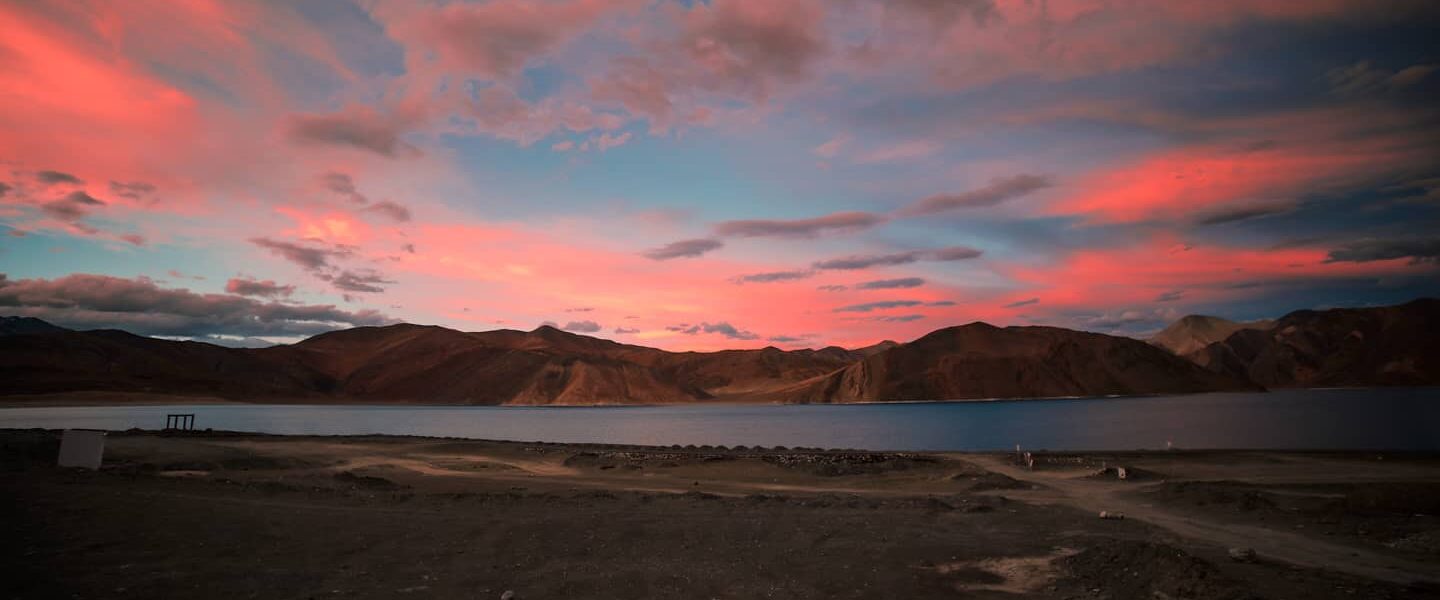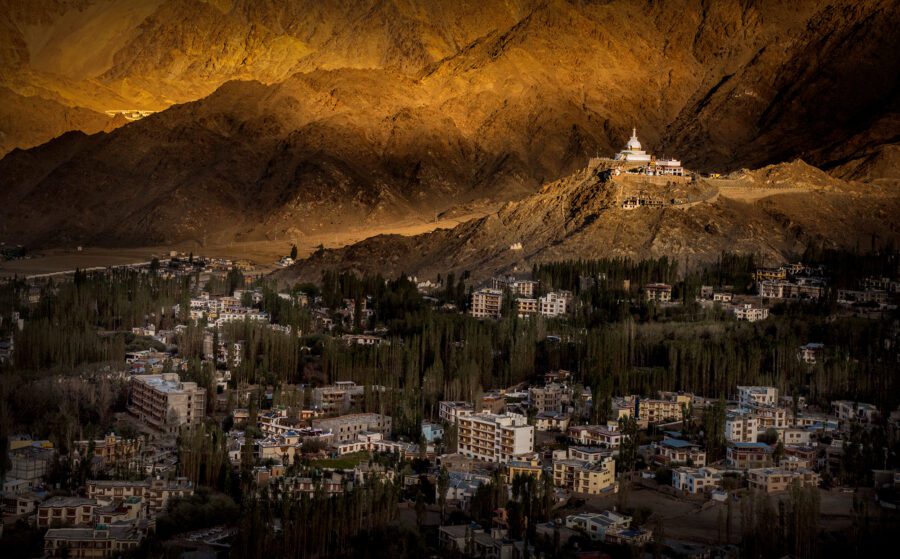Where Silence Paints the Sky — Reflections from the Edge of Pangong Lake Ladakh
By Elena Marlowe
Prelude — The Moment Before the Light Shifts
The Hushed Threshold
There is a moment, somewhere between afternoon and dusk, when the wind that crosses the Changthang Plateau forgets its direction. The air stills, the mountains hold their breath, and the lake—Pangong Tso—waits. The travelers who find themselves here often stop speaking, not because they are asked to, but because the landscape makes words irrelevant. Before the sky turns pink, before the first color slides across the still surface, the world feels as if it is on pause. The silence is not absence, but presence—a fullness that listens back. Pangong Lake Ladakh, a high-altitude expanse shimmering at over 4,300 meters, becomes a mirror not just for clouds but for memory itself. Each gust of wind brings whispers from Leh, Tangtse, and the remote Changthang valleys where nomads still trace the seasons. This stillness is not static; it hums with anticipation, a geography of listening. To stand here is to feel the Himalayas teach patience—to understand that beauty arrives slowly, one breath at a time.
The Art of Anticipation
Every journey to Pangong Lake begins with expectation. Travelers come for the photograph, the color, the idea of standing where the earth meets its own reflection. But what they encounter is subtler. The thin air distills sound, and even one’s heartbeat seems to echo. The lake stretches endlessly, changing color with every hour, every cloud. Morning offers sapphire clarity; noon burns with light so pure it feels like a revelation. And then, in the late afternoon, when the sun begins to sink behind the Ladakh ranges, the transformation begins. A faint rose tint touches the peaks, slides down to the water, and the sky becomes a painter—layering coral, mauve, and the softest blush imaginable. It is not a spectacle for applause, but a slow unfolding for those who linger long enough to see how light remembers the world. Pangong does not perform; it reveals. And in that revelation, the traveler learns to surrender hurry itself.
Part I — The Geography of Light
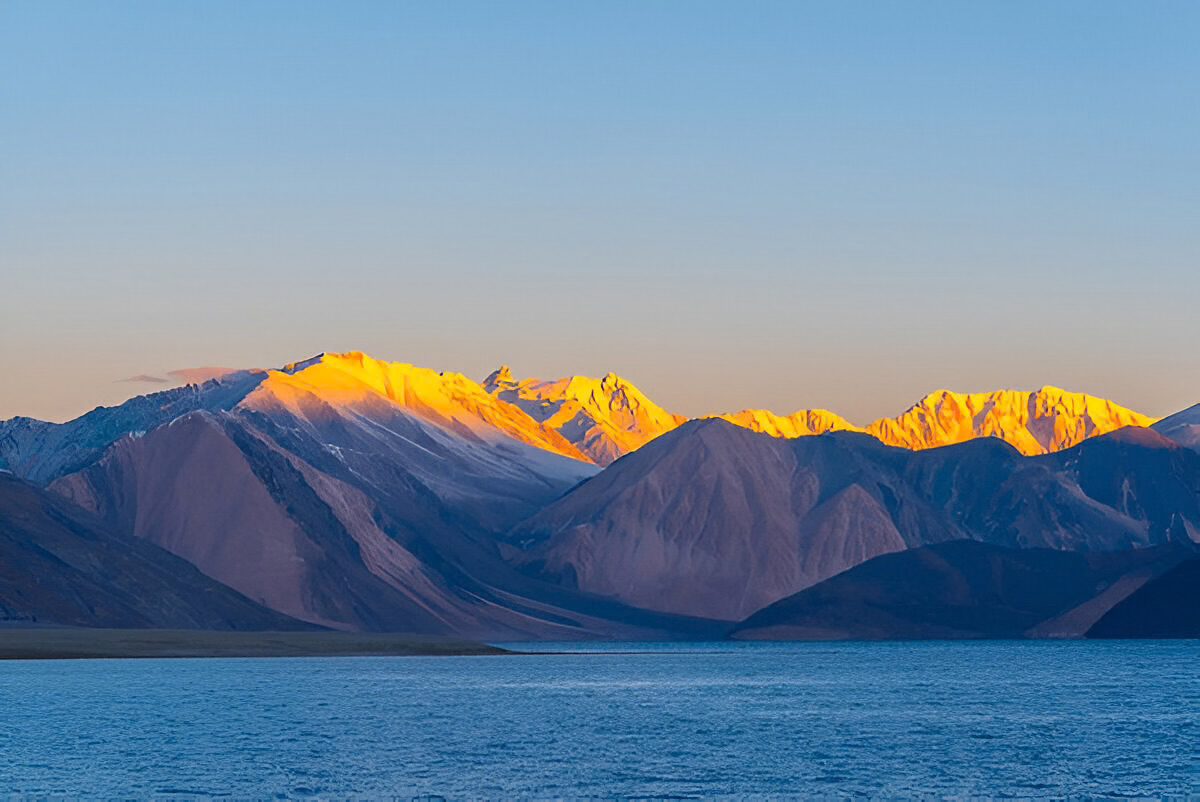
When Mountains Become Mirrors
At first glance, Pangong Tso seems unreal—a lake so vast it stretches beyond sight, so vivid it could be mistaken for glass poured across the earth. Straddling the Indian and Tibetan frontiers, it is a place where the Himalayas dissolve into reflection. The water holds a thousand moods: turquoise at dawn, cobalt at noon, rose at sunset. These are not mere colors; they are acts of transformation. Standing at Spangmik or Lukung, you can watch the light evolve like a breathing organism. Shadows migrate across ridges, clouds trace calligraphy on the lake’s skin, and every hue feels like a confession of the mountains themselves. In those fleeting minutes before twilight, when the pink sky glows over Pangong Lake, there is a unity between earth and heaven. The silence thickens, almost physical, and you realize that this is not a landscape to be conquered—it is a mirror that insists on intimacy.
The Wind That Draws Its Own Map
Here, the wind does not simply blow; it composes. It erases footprints, sculpts sand, braids the prayer flags into stories of impermanence. Along the edges of Pangong Lake, the gusts carry fragments of salt and whispers from the Changthang nomads moving between valleys. Each trail seems temporary, as if made for the day alone. This ephemerality is the essence of Ladakh—its geography teaches that nothing stays fixed, not even the mountains. Travelers who stay for a night or two often sense that the wind is trying to unwrite their itinerary, urging them to wander without purpose. To let go of the map is to discover another kind of direction—one drawn by feeling, not by coordinates. The journey to Pangong is not about arrival; it’s about dissolving into the rhythm of light, air, and distance. The map, finally, is internal.
Part II — Between Sky and Memory
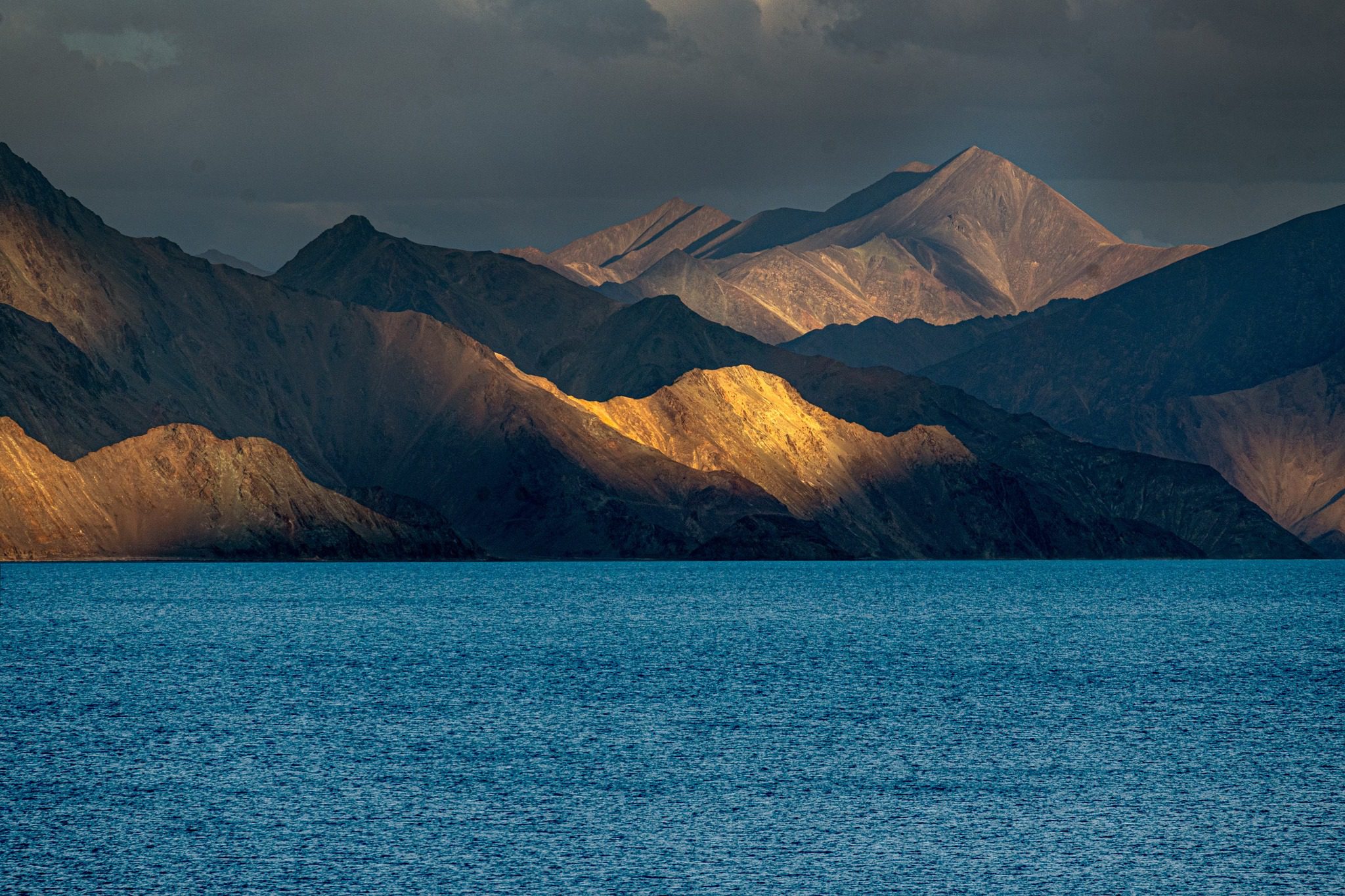
Echoes of Water, Shadows of Time
Every reflection on Pangong Lake is a memory rehearsed by nature. The villagers of Spangmik say the lake has moods; sometimes it smiles, sometimes it mourns. The wind carries voices—echoes of the caravans that once crossed from Tibet, of monks who walked barefoot along the shore, of travelers who left pieces of their longing here. Each dusk becomes a small ritual of remembrance. The pink sky over Pangong is not simply color—it is memory dissolving into air. As the sun lowers, the surface turns glassy, holding within it the shapes of peaks and clouds, but also the unseen imprints of time. The water reflects not just what is, but what was and what will be. In this convergence of moments, the traveler begins to feel the continuity that defines Ladakh—a geography that does not separate past from present, but folds them into one eternal now.
The Color of Stillness
When the light turns rose and amber, Pangong becomes the embodiment of quiet joy. The hues deepen as if drawn from the lake’s own pulse. To witness this transition is to understand that color is a language of silence. The lake remembers every wind, every prayer whispered into its air. And as twilight descends, a sense of completion settles—the end of day, the beginning of reflection. Some call it magic; others call it science. But what truly happens is belonging. The pink sky at Pangong is not only a spectacle; it’s an invitation to stand still long enough to feel yourself mirrored by the world. The stillness has a heartbeat, and in that rhythm, time expands. The vastness no longer feels remote—it becomes home.
Part III — The Pilgrimage of the Ordinary
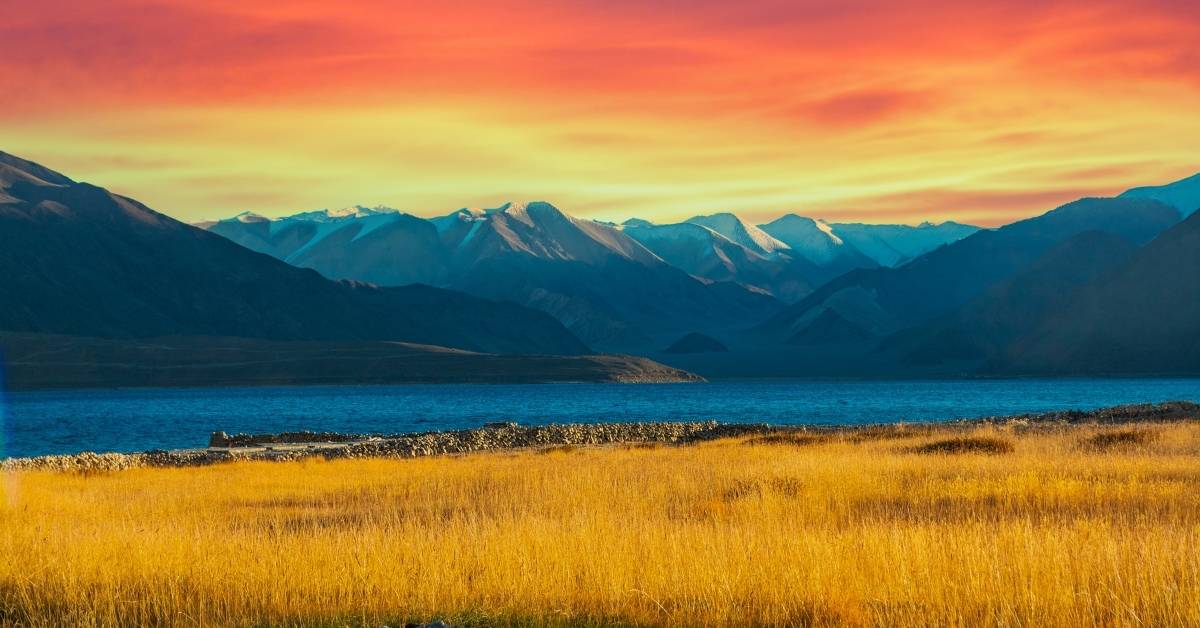
How to Breathe in Thin Air
High-altitude life teaches humility. At 4,350 meters, breathing becomes deliberate, each inhalation a small act of gratitude. The traveler learns to slow down, to listen to the body, to the rustle of wind over rock. In Pangong, walking itself is meditation. The light air carries both sharpness and clarity, reminding you that existence here is fragile, precise, and deeply aware. Locals move with an unhurried grace, carrying warmth in their gestures. They understand that time stretches differently where the earth meets the sky. There is no rush; there is rhythm. To breathe in Pangong is to breathe in the Himalayas’ philosophy—that endurance is not conquest but acceptance. You begin to realize that thin air makes room for depth, that every breath anchors you closer to silence. This is the essence of travel at altitude: learning to live within the quiet that sustains life itself.
Tea at the Edge of the World
In a small tent near Tangtse, the smell of butter tea drifts through the cold. A woman pours it with both hands, her movements deliberate and patient. She smiles without speaking. Her face carries the weather of decades—the same pink hue that the evening sky wears. Around her, the mountains glow like fading embers. This scene, ordinary as it seems, is the true center of Pangong: the act of sharing warmth in a landscape defined by chill. The tea, thick and slightly salty, steadies your breath and slows your thoughts. You begin to see that the meaning of a place lies not in its grand vistas but in such gestures—moments of hospitality that bridge strangers and silence alike. Here, at the edge of the world, you learn that even stillness can taste like home.
Part IV — What the Lake Teaches
The Impermanence of Light
Each shade that graces Pangong’s surface lives briefly. The pink dissolves into violet, then indigo, before the night descends like a soft curtain. Watching this change is like reading a quiet sermon: beauty exists because it disappears. In a world obsessed with permanence, Pangong reminds us that transience is sacred. The lake’s shifting palette—its endless metamorphosis—teaches presence. You learn to see with patience, to accept that every moment’s brilliance will fade, yet leave an afterglow within you. This is the lake’s lesson: hold nothing too tightly, not even beauty. For when it leaves, it transforms into memory, and memory, when tended gently, becomes gratitude. The sky turning pink is both a beginning and an ending—an unspoken rhythm that carries the Himalayas’ truth.
When the Mirror Breaks
After twilight, the reflection vanishes. The stars spill across the water, fragile and infinite. The wind rises again, and the surface ripples, breaking the illusion of perfection. In that moment, you realize that the lake was never a mirror—it was a conversation. What you saw within its stillness was not the sky, but yourself, refracted through distance and light. This recognition is the traveler’s quiet revelation: that every journey outward is also inward. As the night deepens, Pangong ceases to be a destination and becomes a teacher. It whispers: do not fear the darkness; it is simply another shade of reflection. And so the traveler stays a little longer, warmed by the memory of light, listening to the lake’s calm voice beneath the stars.
Epilogue — The World That Glows After Silence
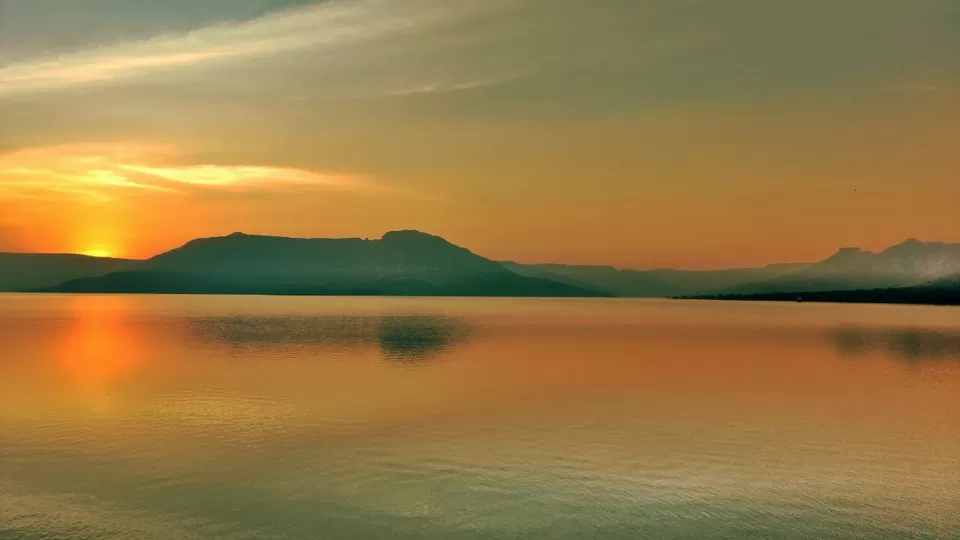
Carrying the Light Home
Long after leaving Pangong Lake, the image lingers—the horizon blushed in pink, the air trembling with quiet. In cities far from Ladakh, when dusk falls, you will remember how the lake held both sky and silence in perfect balance. That memory will rise like prayer flags in your mind, reminding you that stillness is not absence but presence waiting to be felt. The glow you witnessed becomes inward light, a compass of calm for the noise that awaits elsewhere. Perhaps that is why travelers return—not to see the color again, but to remember how it felt to belong to something vast and unspoken. Pangong teaches that the world’s beauty is not in its scale but in its willingness to be seen softly.
“The sky turns pink only for those who have learned to wait for silence.”
FAQ — Travelers’ Reflections
What time does the sky turn pink over Pangong Lake?
Usually between 5:30 and 7:00 PM, depending on the season. The shift is gradual—beginning as a subtle warmth along the ridges before the entire lake glows. It is not a flash of color but a slow transformation best observed in stillness.
Is it possible to stay overnight at Pangong Lake?
Yes, travelers can stay at camps or eco-lodges near Spangmik, Lukung, or Man villages. Nights are cold, often below freezing, but the starlit sky and reflective water make the experience profoundly serene and unforgettable.
Why does Pangong Lake change color throughout the day?
The color shifts because of light refraction, mineral content, and the lake’s shallow depth in certain areas. But beyond science, the transformation feels spiritual—an ongoing conversation between light, air, and water.
How can I reach Pangong Lake from Leh?
Most visitors travel by road via Chang La Pass, around 160 kilometers from Leh. The route offers sweeping views of high-altitude deserts, monasteries, and mountain villages—an experience as moving as the destination itself.
What should travelers keep in mind while visiting Pangong?
Respect the fragile ecosystem, carry reusable bottles, and avoid littering. The high altitude demands acclimatization, so move slowly, stay hydrated, and allow yourself to rest. Above all, listen—to wind, silence, and your own heart.
Conclusion — Lessons from the Mirror of Light
Pangong Lake is not a postcard; it is a dialogue between stillness and motion, between the traveler and time. Its pink horizon reminds us that beauty does not demand attention—it asks for presence. To witness the sky turning pink over Pangong is to witness yourself dissolve into color, humility, and awe. The mountains do not speak, yet they articulate everything essential: patience, impermanence, and wonder. In the end, what remains is not the photograph, but the silence that followed. The reflection becomes inward, eternal, and profoundly human.
Closing Note
If you ever find yourself near Pangong as the day ends, stay until the last light fades. Watch the sky soften, the air cool, and the lake turn into a mirror of dreams. In that fragile glow, you will understand that the world does not need to be conquered—it only needs to be seen, gently, and remembered with grace.
About the Author
Elena Marlowe is an Irish-born writer living in a quiet village near Lake Bled, Slovenia.
She crafts elegant, place-rooted travel columns that braid landscape, memory, and attentive stillness.
Between journeys, she edits at dawn, walks the lakeside paths, and shapes long-form narratives from the Himalaya’s high plateaus and the old roads of the Balkans.

